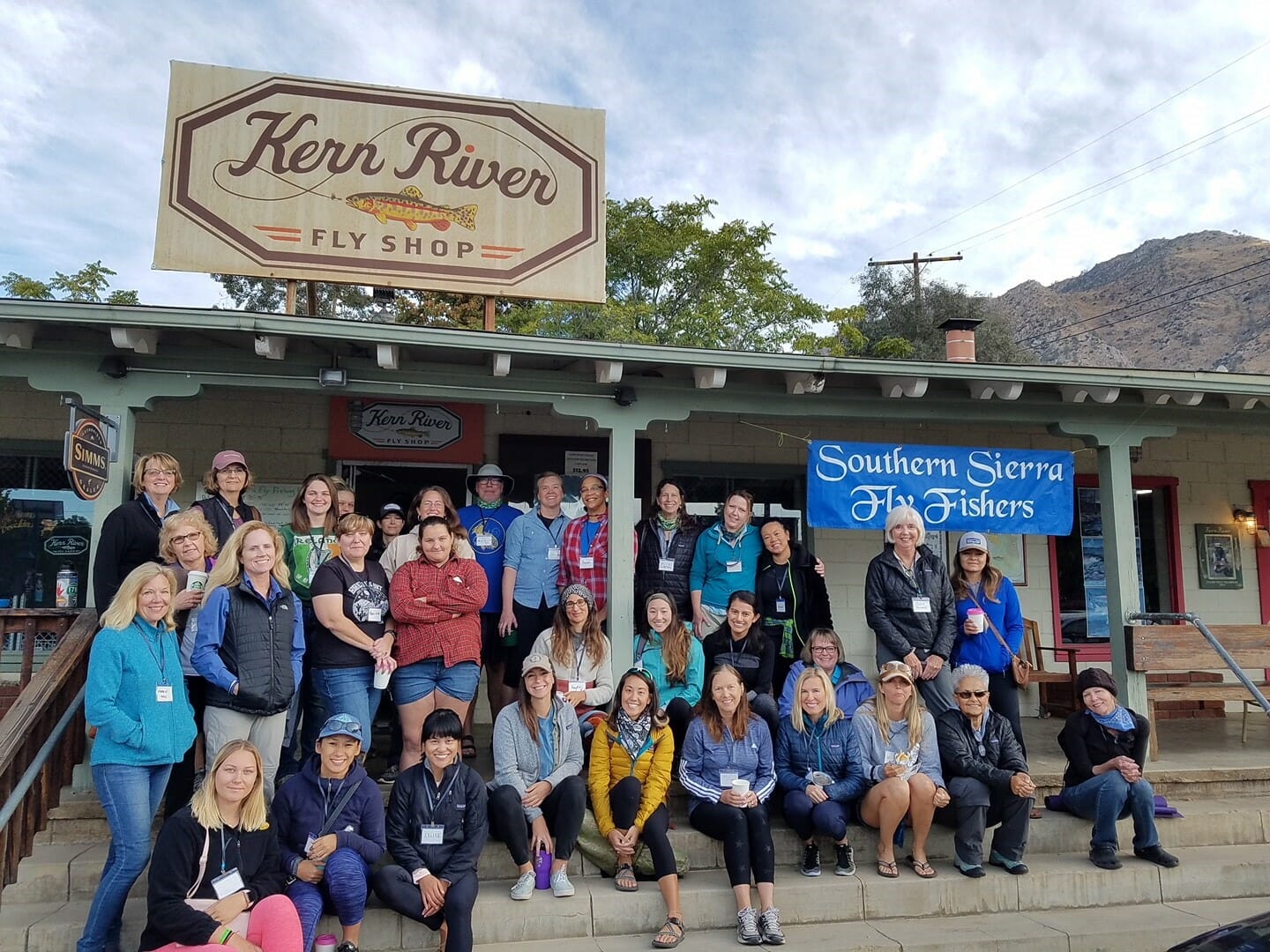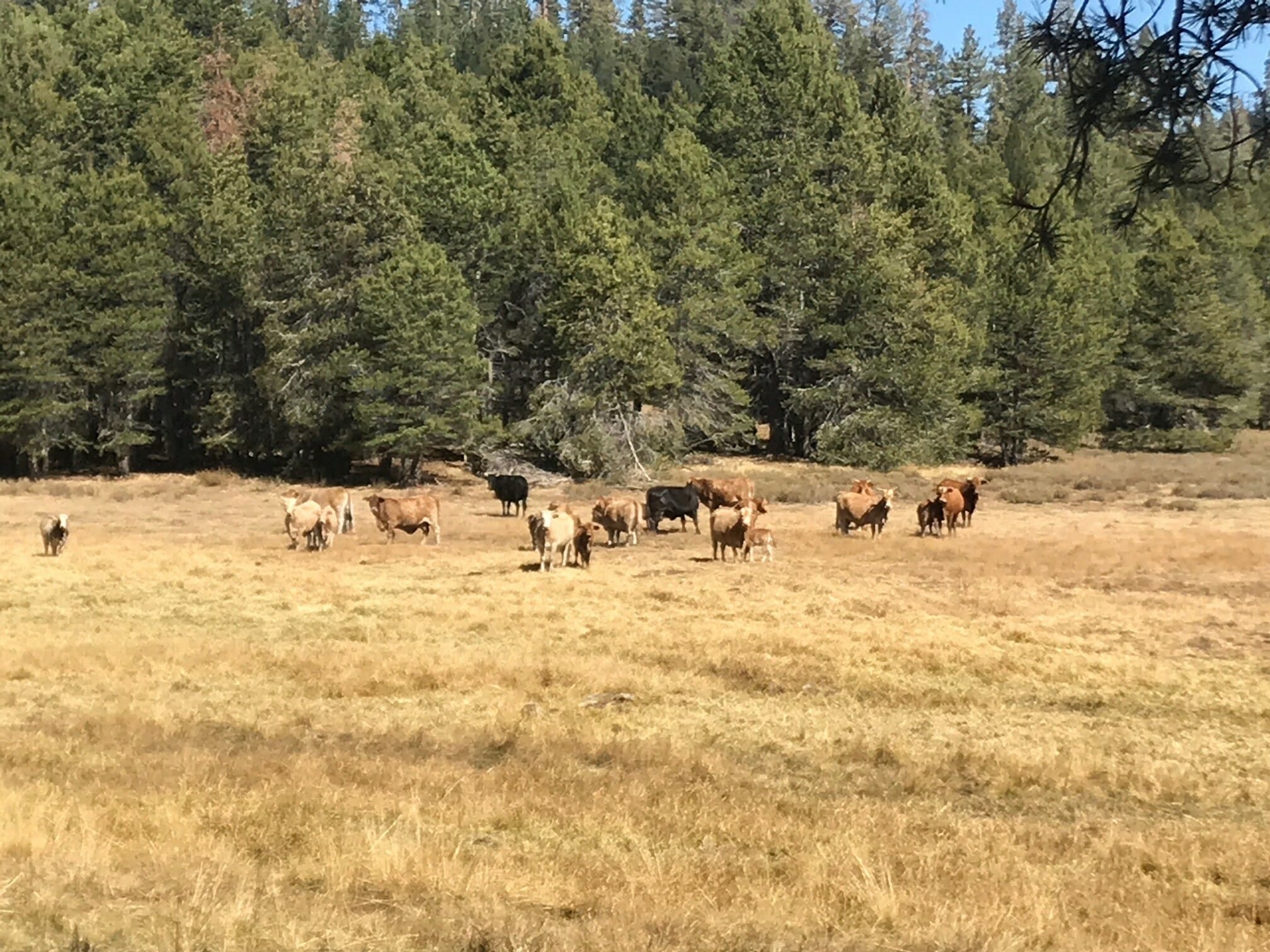Jessica Strickland and her daughter Vida, project managing in the Sequoia National Forest backcountry.
By Jessica Strickland
Working with Trout Unlimited really is just NOT boring. What we do as field staff is so diverse that I have become a woman of many hats.
A recent weekend was a great example of how what we do at TU touches fisheries conservation on so many levels. In my job, I work to protect and restore public lands in California through a variety of ways: advocacy, policy, science, restoration, outreach. The weekend of October 13-14 was a good illustration of how my work often blends topics and techniques — in this case, science and outreach.
I manage several high alpine meadow restoration projects in the headwaters of the Kern River in the Sequoia National Forest (California golden trout territory), and I needed to make the seven-hour trek down there to pull some stream temperature monitoring equipment from the project sites before winter storms set it. Coincidentally, months ago, I was asked to speak about fisheries conservation issues at a “FlyGals” women’s event in a little mountain town – Kernville – which happens to be surrounded by the Sequoia.

Participants in the 2018 FlyGals event, Kern River, California. Photo by Jessica Strickland.
I jumped on the opportunity to arrange my restoration monitoring trip around a women’s outreach event. Sorry guys, but I love seeing anyone out on the water that’s a little outside the standard, especially other women.
The weekend was a success for many reasons. First of all, the turn out for the FlyGals event was amazing. This event was hosted by the Southern Sierra Fly Fishers, a regional fly fishing club, and they did a really great job of making it fun — yoga in the morning, pint nights, etc., while also including great content such as instruction in casting, knots, entomology, and conservation.
Speaking to fellow sportsmen and women about conservation in the Sequoia National Forest is especially important because the Sequoia has so much going on that affects anglers — three endemic trout species (two of which are at-risk), current revision of the “Master Plan” for the forest (which directs among many other things how fisheries will be managed), and lots of golden trout-focused habitat restoration activity in the backcountry.

Meadow restoration project site, Sequoia National Forest. Grazing livestock are just one of many challenges in TU’s work to restore montane and alpine meadows in the Sierra Nevada and southern Cascades ranges. Photo by Jessica Strickland.
Another success for the weekend was actually finding the water temperature loggers (which are about the size of a quarter and are strapped to small rocks mid-stream) I and my crew had placed previously in the meadow restoration sites. These temperature loggers are used to collect pre-restoration data to compare if and how our restoration efforts (scheduled for summer 2019) improve the coldwater fish habitat in this region.
We all know rivers are dynamic, ever-changing, and even after only a short summer at high elevation, finding where you left these little guys is like finding a needle in a haystack. This visit, the challenge was even greater as I was equipped with both a GPS unit and a five-month-old baby strapped to my chest.
It’s not every job where you can fly fish with a bunch of ladies one day, work in real backcountry with your baby in tow the next, and at the end of each day, know you’re doing something good for our coldwater fisheries.
Jessica Strickland is TU’s California Field Coordinator. She lives in Nevada City, California, near the Bear and South Fork Yuba Rivers. Her intrepid dog Ada Mae and her new daughter, Vida, are key partners in her backcountry restoration project work.



